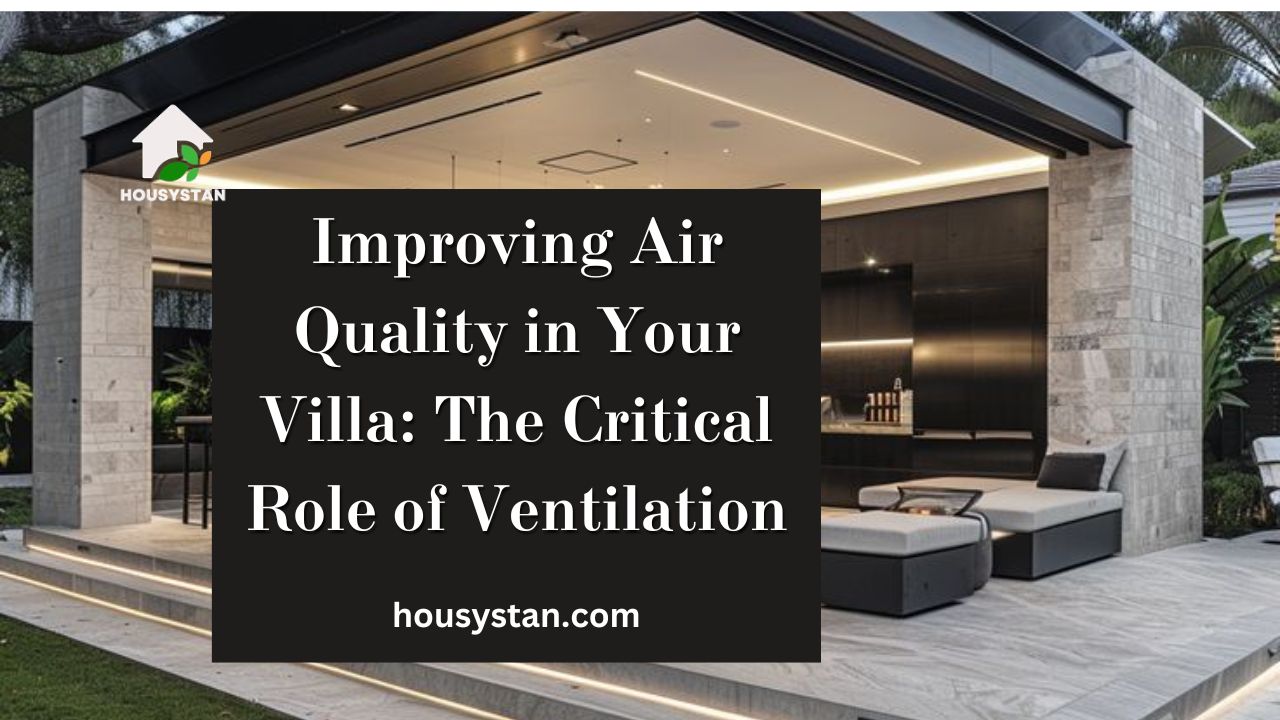Improving Air Quality in Your Villa: The Critical Role of Ventilation
Read latest blogs and articles from Housystan

The Information mentioned here was last updated on:
11/12/2025Enhancing indoor air quality in your villa is essential for maintaining a healthy, comfortable, and inviting living space. In regions with unique climates, such as Dubai, Abu Dhabi, or across the UAE, proper ventilation plays a pivotal role in ensuring that your home remains free from pollutants, allergens, and excess humidity. Understanding the importance of ventilation systems can help villa owners create a safer environment for their families and guests.
Modern villas often feature airtight construction, which, while energy-efficient, can inadvertently trap airborne contaminants indoors. Without adequate airflow, dust, pet dander, mold spores, and cooking fumes accumulate, leading to poor air quality. This can cause respiratory issues, allergies, and discomfort, particularly for children and the elderly. Investing in a reliable ventilation system is crucial to mitigate these risks and achieve optimal living conditions.
Natural ventilation, achieved through strategically placed windows and doors, allows fresh air to circulate while expelling stale air. However, in cities like Dubai or Sharjah, outdoor air may carry dust or pollutants, especially during sandstorm seasons. That’s why mechanical ventilation solutions, such as heat recovery ventilators (HRVs) and energy recovery ventilators (ERVs), have become increasingly popular. These systems filter incoming air, maintain indoor temperatures, and significantly reduce energy consumption—making them ideal for villas in the Middle East’s harsh climate.
- Verified Tenants/Buyers
- Unlimited Property Listing
- Zero subscription/charges fee
Proper maintenance of ventilation equipment ensures consistent performance. Regularly cleaning filters, inspecting ducts, and scheduling professional servicing are vital steps for homeowners. Additionally, integrating smart controls allows you to monitor air quality levels and automatically adjust ventilation rates according to occupancy and weather conditions. This not only optimizes comfort but also supports sustainability by reducing energy waste.
Choosing the right ventilation strategy for your villa in the UAE or GCC region depends on various factors, such as villa size, location, and family needs. Consulting with local air quality experts ensures compliance with health guidelines and local regulations. By prioritizing ventilation, you create a healthier, fresher, and more enjoyable villa environment—making your home a true oasis in the heart of the UAE.